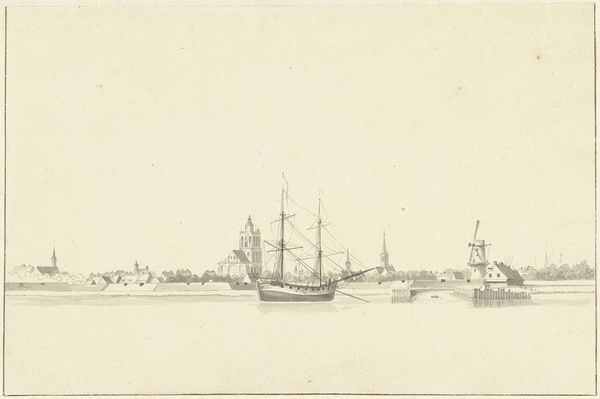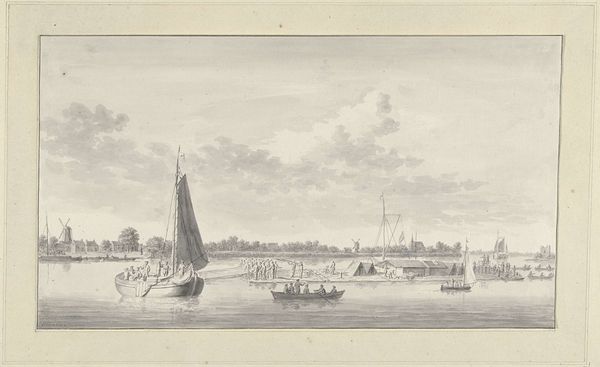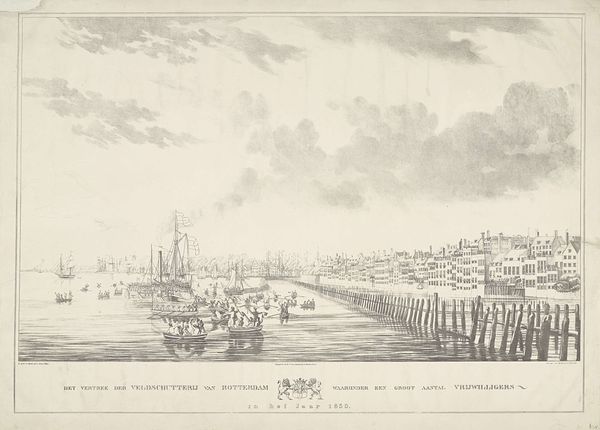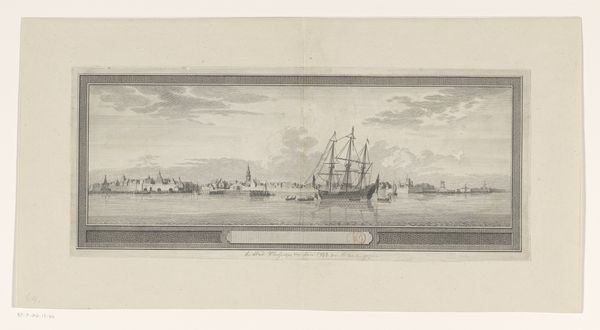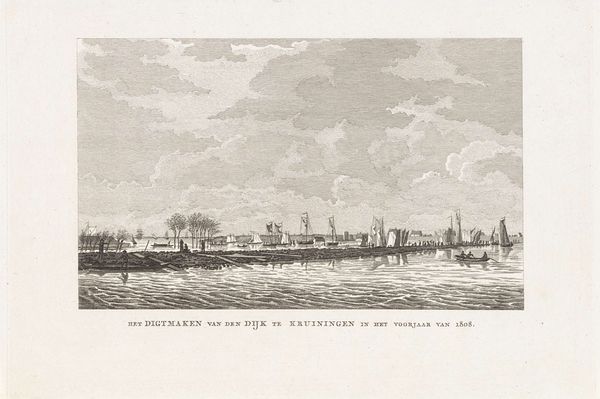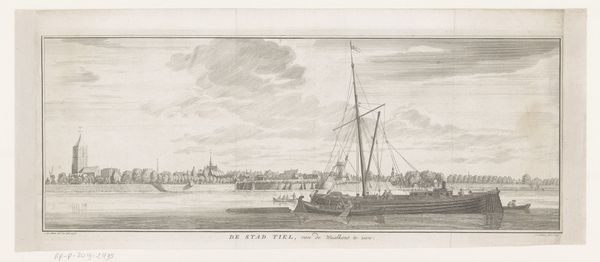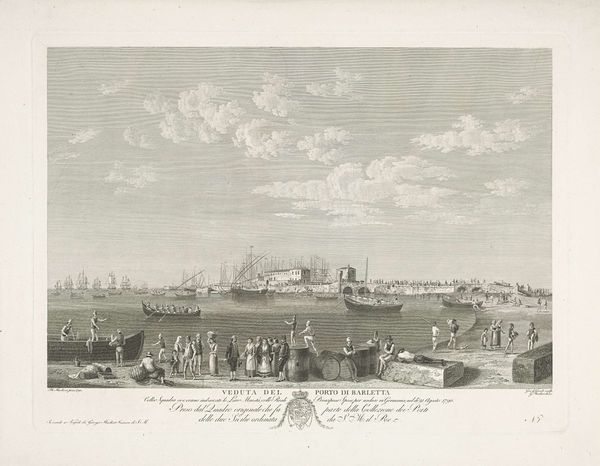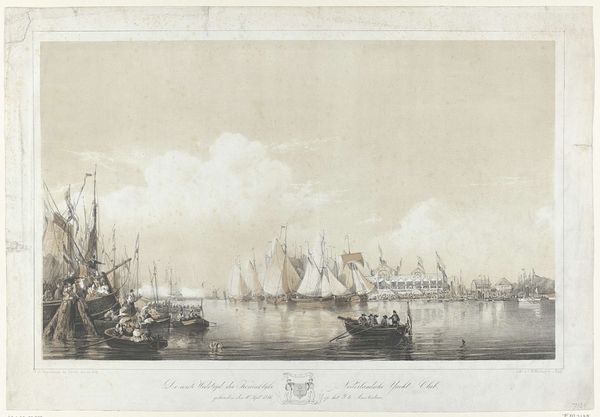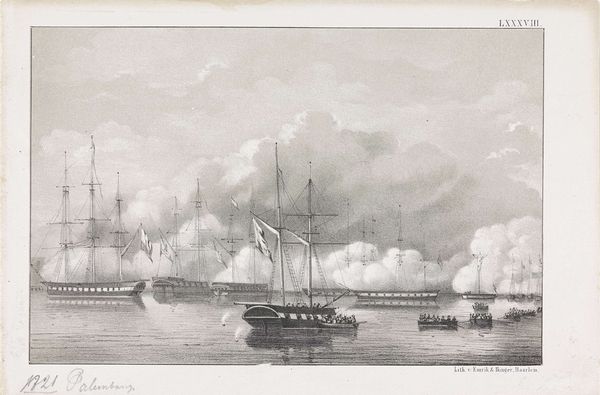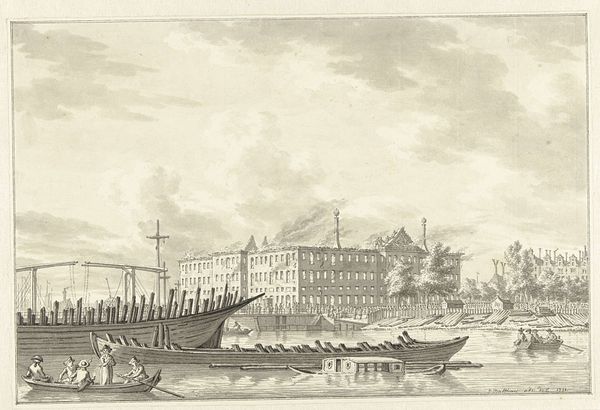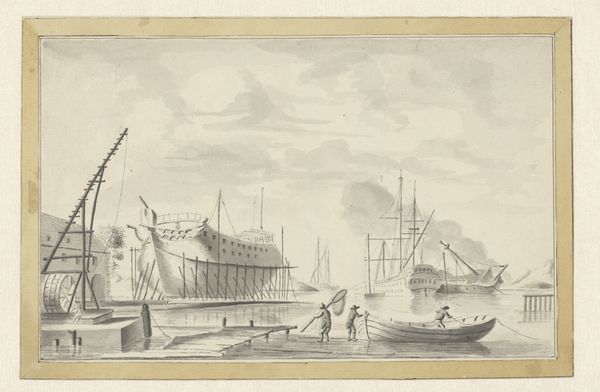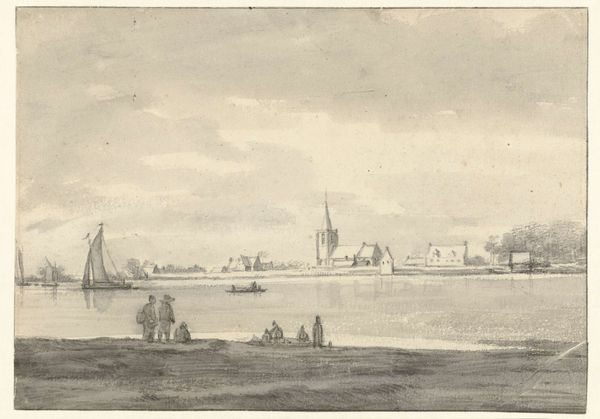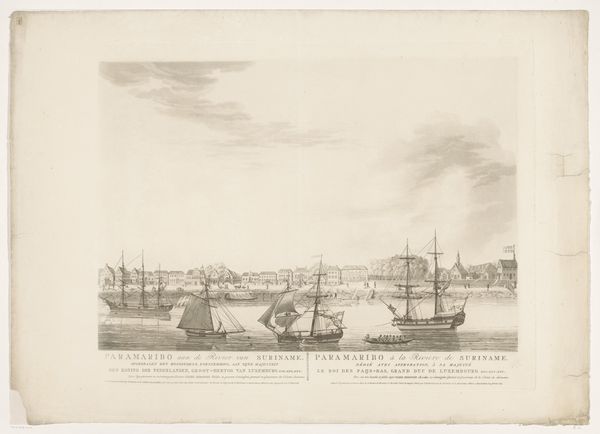
Gezicht op het Feestgebouw waar het muziekfeest is gehouden, 1854 1855
0:00
0:00
lithograph, print
#
16_19th-century
#
lithograph
# print
#
landscape
#
cityscape
#
genre-painting
#
realism
Dimensions: height 283 mm, width 365 mm
Copyright: Rijks Museum: Open Domain
Curator: This lithograph from 1855, created by Adolf Carel Nunnink, captures a specific moment: a view of the Festival Building in Rotterdam. Note how the cityscape dominates, a testament to 19th-century urban development. Editor: It's rather muted, isn't it? The grayscale gives it a somewhat somber feel, even though it depicts a festive occasion. I'm immediately struck by the stillness of the water, contrasting with the implied energy of the event. Curator: Well, lithography lends itself to this subtle gradation. Consider the stone Nunnink would have used, carefully layering the image through successive applications of ink and pressure. This technique allowed for a wide distribution of images documenting such civic structures. It speaks to the industrial capacity and a growing need to disseminate information visually in the burgeoning urban landscape. Editor: I see what you mean, but still…that single flag atop the large hall on the left... it droops slightly, and the people seem so small compared to the architecture. Is there perhaps a comment on the individual's place within this new, industrializing society? Or is that merely my interpretation imposing on the scene? I'm intrigued by that. The tall ships also appear less grand here, their symbolic power somewhat diminished. Curator: Possibly. But let's not ignore the socio-economic implications of the print itself. The rising middle class sought access to visual representations of progress. These prints became commodities, and thus participated in the cycle of production and consumption emblematic of the time. Lithography made art more accessible and allowed for documentation of contemporary advancements. Editor: That is all true. Thinking about it, flags and tall ships evoke a sense of mercantile pride and global ambition that certainly permeated the 19th century and can also be perceived from the point of view of power relations and commerce reflected in the materials, and now echoed faintly by these symbols. It also feels relevant that the "Feestgebouw" would hold music. Curator: Precisely! The lithograph acts not just as an artwork, but as evidence of cultural and material production of mid-19th century Rotterdam, depicting a structure for communal artistic gatherings, and an artistic method of production and dissemination. Editor: Food for thought indeed! Seeing Rotterdam through Nunnink's grayscale perspective encourages reflection about this historical moment. Curator: Yes, and viewing it as a product of 19th century artistic dissemination as well.
Comments
No comments
Be the first to comment and join the conversation on the ultimate creative platform.
